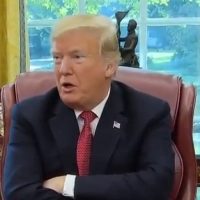[R]obust U.S. military power produces positive spillovers in other areas of statecraft. … Put simply, if the United States did not command such impressive military power, it would be far less effective in achieving its economic and diplomatic goals.
With these words, in testimony before the House Armed Services Committee on Sept. 26, Hal Brands established the clear connection between our military and our foreign policy goals.
Brands, a professor of global affairs at Johns Hopkins University, a prolific author, and student of American grand strategy, was speaking in support of a U.S. military that is in the first stages of a fragile rebuilding process.
The military currently lacks the capabilities necessary to respond to two major conflicts simultaneously, the gold standard for a superpower.
The Heritage Foundation’s Index of U.S. Military Strength has recorded a significant decline in the conflict readiness of the U.S. armed forces between 2015 and 2018, particularly within the Army and Air Force.
No branch earned a rating better than “marginal” in their conflict preparedness.
The recently released 2019 edition of the index shows a slight bounce-back, featuring increases in readiness levels and investment in modernization efforts.
The prior decline is largely reflective of the level of funding for the Department of Defense. Appropriations for the Defense Department from 2011 to 2016 had been largely inadequate to maintain the necessary capabilities to fulfill the mission we ask of our armed forces.
The Bipartisan Budget Act, despite its multiple flaws, has set a positive trajectory in 2018 and 2019 for our military.
Read the full story from The Daily Signal
Want more BFT? Leave us a voicemail on our page or follow us on Twitter @BFT_Podcast and Facebook @BluntForceTruthPodcast. We want to hear from you! There’s no better place to get the #BluntForceTruth.







